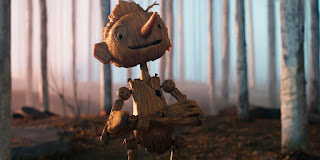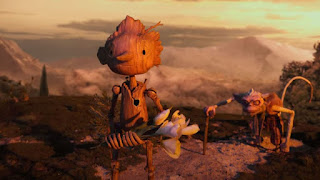It took thirteen years but the long-awaited sequel to James Cameron's phenomenon Avatar titled Avatar: The Way Of Water, finally arrives in theaters. Released in 2009, the original film shattered worldwide box office records due to its use of groundbreaking new technology while popularizing the 3D format, which became a standard norm with film releases afterwards. Originally scheduled to be released in 2014, Avatar's sequel experienced numerous delays prior to its eventual release. Although it seemed like a forever wait for the much anticipated sequel to arrive, James Cameron finally returns and transports audiences back to Pandora with a follow-up that's even more visually breathtaking and emotionally gripping than it's predecessor.
The Way Of Water picks up years after the first Avatar with Jake Sully and Neytiri now as parents, find their family being forced to leave their home and explore different regions of Pandora when an old enemy returns seeking revenge. Besides the first Avatar's groundbreaking SFX, the plot for it faced criticism for significantly resembling that of Dances Of The Wolves, Pocahontas, and Ferngully. It feels as if Cameron took notice of this criticism and crafts a storyline for the sequel that strikes a more personal chord with it being family-themed. Though it can be argued that the sequel too impresses more as a visual piece rather than one of storytelling, Avatar: The Way Of Water nonetheless delivers a visually immersive experience that surpasses the original.
As far as performances go, The Way Of Water's cast show total devotion towards their roles with everyone giving their all. Sam Worthington's performance as ex-marine turned Navi Jake Sully, feels more focused and well-rounded this time as a husband and father fighting to protect his family from an old enemy. Zoe Saldana owns it once again as Jake's mate Neytiri with the latter delivering one of the best motion capture performances on film in addition to showing a frustrated and fearful mother whose concerned about her families safety along with the well-being of her home. Stephen Lang is terrific in his reprisal as Colonel Miles Quaritch, who was killed in the first film and became resurrected as a Recombinant Avatar. Lang stays true to the origins of his human character here while portraying a more vengeful and somewhat conflicted Quaritch. Other impressive supporting performances include Sigourney Weaver returning as Jake and Neytiri's 15-year old adopted teenage daughter, Kiri with the latter loving her adopted family while being drawn to her own origin regarding her real mother. Kate Winslet and Cliff Curtis deliver strong supporting performances as Ronal, a free diver of the Metkayina tribe and Tonowari's pregnant wife, with Cliff Curtis being equally strong as Ronal's husband and chief of the reef people clan of Metkayina. Overall, Water's acting ranges as being remarkable with the films stop motion performances.
Known for pushing the technological boundaries of filmmaking, director Cameron does so once again and demonstrates his gift for imaginative, absorbing filmmaking. If one found the original Avatar to be breathtaking, they'll find the sequel to be even more stunning with newer cutting-edge technology being utilized. The films most groundbreaking sequences are those in which the story takes place underwater with the audience taking in the awe of it all with the main characters. At 192 minutes, the film marks Cameron's second longest theatrical release behind Titanic. While the story definitely feels longer than required at certain points, the length allows for audiences to become more immersed within the universe of Pandora in comparison to the first. Filling in the shoes of the late James Horner, Simon Franglen takes over composing reigns with him incorporating many familiar pieces from the original to honor Horner's work while incorporating powerful new tracks including Neytiri's song that's performed by Zoe Saldana. When it comes to creating and expanding the universe of Pandora, Cameron and his team do a remarkable job of showing more of this fascinating world to audiences with the latter showing himself to be at the peak of his craft.
With The Way Of Water's script, Cameron crafts a more personal and emotional sequel that revolves around themes regarding family, protecting those you love, self-discovery, perseverance, fitting in, along with environmental themes including protecting the ocean and its inhabitants, mining, colonizing other planets, and finding sanctuary with the Sully family searching for a new home while averting being captured by Quaritch. Jake Sully's character is shown to be experiencing fatherhood as he's shown to have found true happiness as a Navi husband and father before being forced to protect his family. The Sully children play a large role here with each one sharing key character arcs that connect the whole story together. Other themes including racism and revenge are at play with the Sully family experiencing prejudice at the hands of the Metkayina klan due to being different kinds of Navi, and Quaritch being vengeful towards Sully for killing his human body. While many of the scripts subplots and character tropes feel like standard tropes that run along the lines of being cliched, Cameron makes them work here along with raising the stakes with the Sully children constantly finding themselves in danger, making it hard for the audience not to care about their well-being. While not the strongest writing of Cameron's filmography, it marks a clear improvement over the originals scriptwriting with the selected themes making a notable difference.
As with the first Avatar, it can be said that the sequel is more remarkable visually than it is with storytelling, though Cameron still packs an emotional punch with driving home the importance of families sticking together. With The Way Of Water, Cameron doesn't hesitate to raise the stakes along with deepening the audience connection with these characters whom they met 13 years prior. What the story lacks in depth, Cameron more than compensates with a narrative that carries a powerful emotional core while further advancing the stories technological aspects to deliver an experience unlike any other seen before on the big screen.
Images Courtesy Of 20th Century Studios/Disney
.jpeg)
.jpeg)

.jpeg)

.jpeg)



.jpg)
.jpeg)



.jpeg)



.png)




























.jpeg)

.jpeg)
.jpeg)